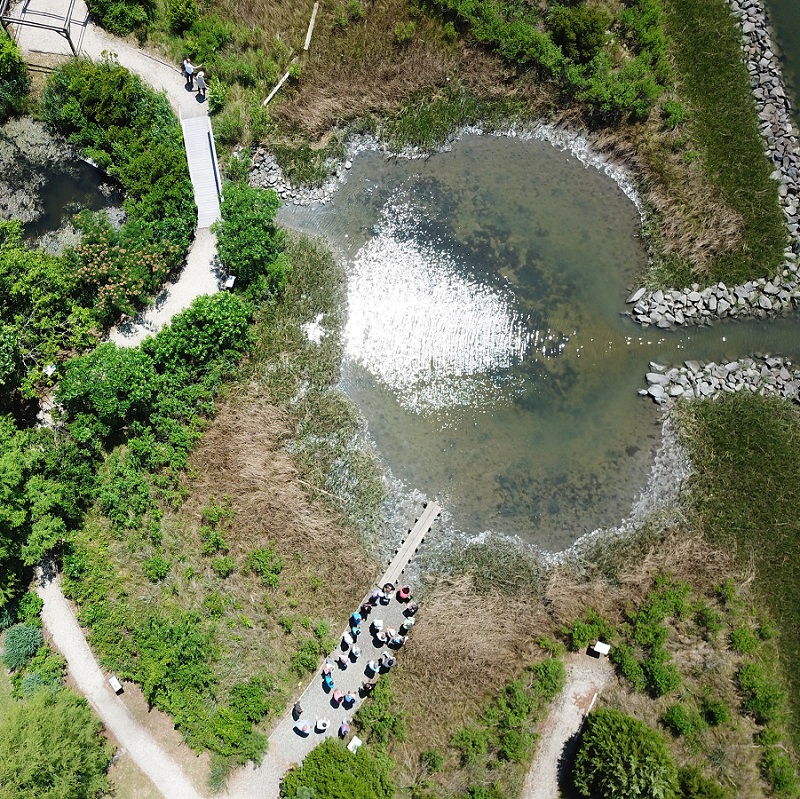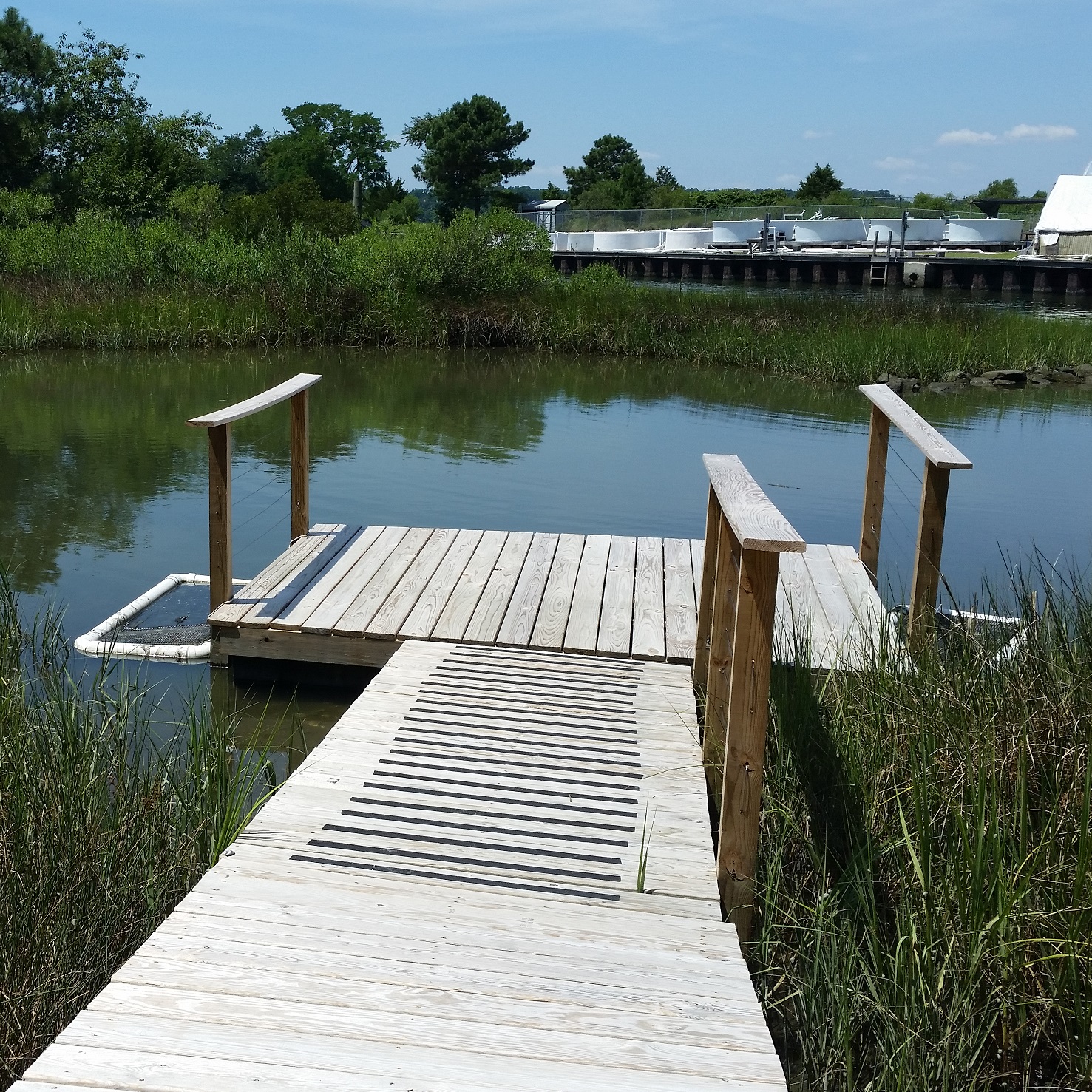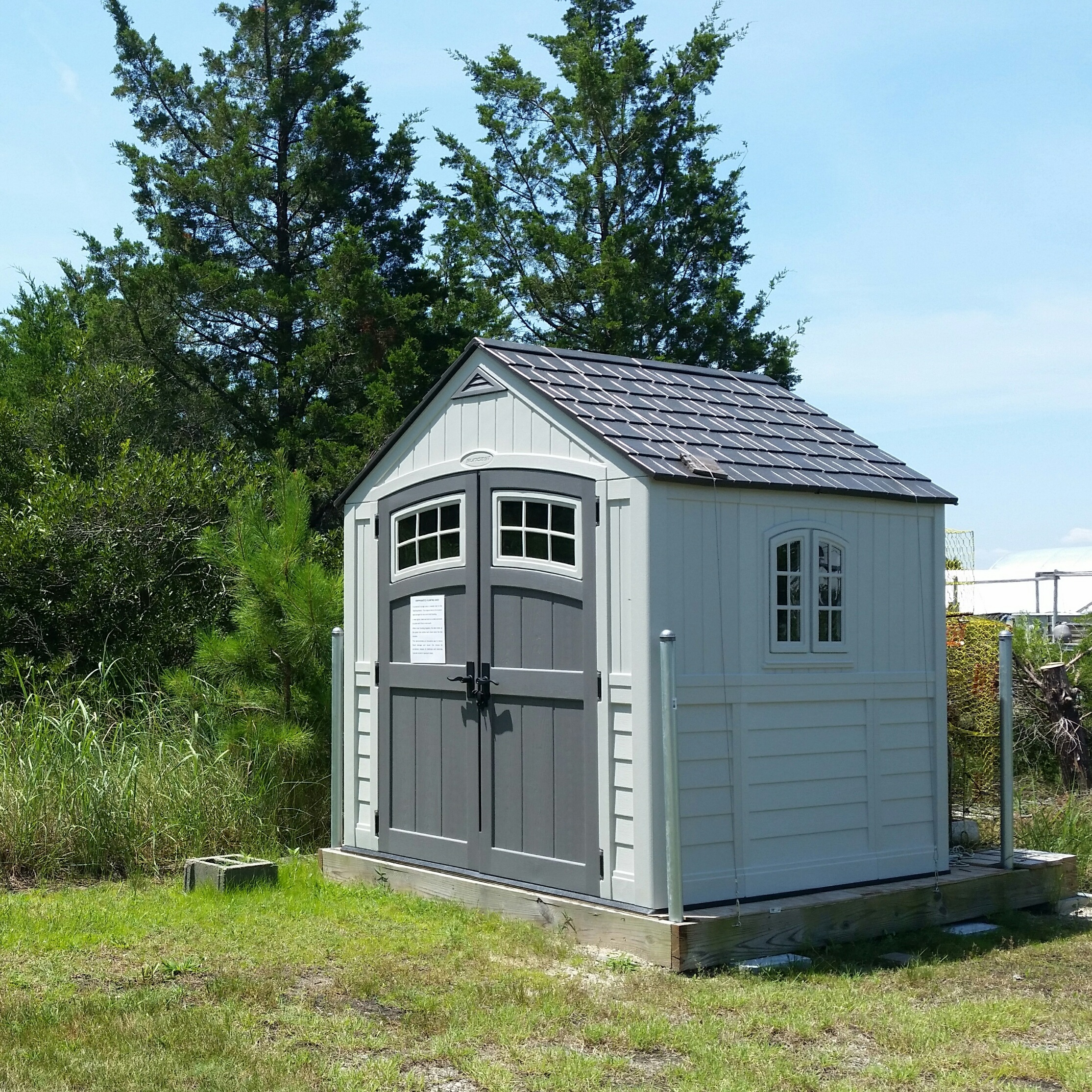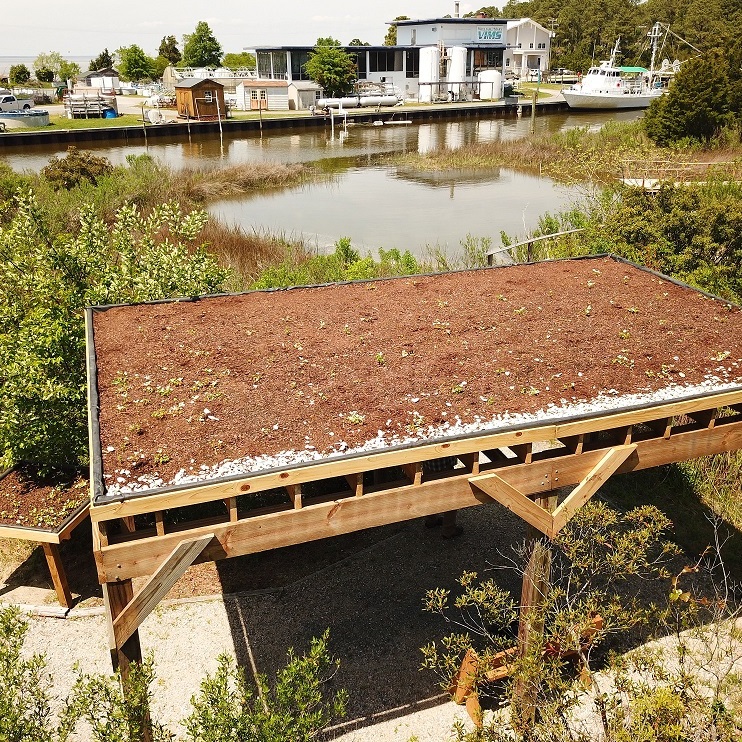Coastal Resilience
The ability of a community to ‘bounce back’ after hazardous events like hurricanes, coastal storms, heavy rainfall and flooding depends on how well both natural habitats and human-occupied landscapes are prepared in advance. With increasing water levels, more frequent flooding and heavy rain events at the Teaching Marsh, these adaptations will help protect water quality and habitat resilience as well as improve access for maintenance and learning.
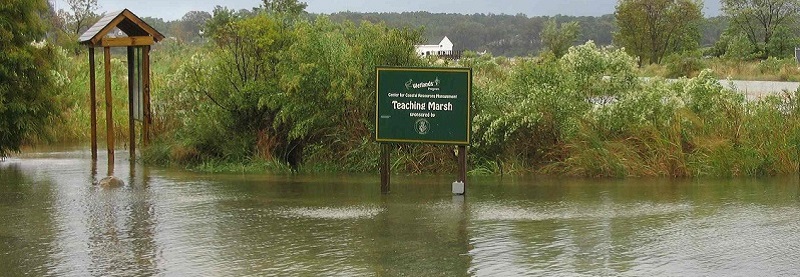
Marsh Migration Areas
Upland areas are reserved and managed for the gradual shift of tidal marsh habitat to higher elevations in response to increased flooding and sea-level rise.
- Read More – Sea-Level Rise & Virginia’s Coastal Wetlands (pdf)
Floating Pier
A new pier with extended length, higher elevation and a floating platform provides access during most high tides now and into the future.- Read More – Forecasting Coastal Water Levels in Virginia (pdf)
Amphibiated Floating Shed
A new shed on a floating platform is designed to rise during floods without releasing the contents stored inside.- Video – Adapting to flood waters during Hurricane Dorian
- Read More – Are Floating Houses in Virginia’s Future?
Living Roof
A shelter roof was retrofitted with a shallow planting area. Vegetated roofs are designed to reduce the volume of stormwater flowing off the roof. This is an example of an “Extensive” Living Roof with a light weight load and minimal maintenance.
- Read More – Virginia DCR Stormwater Design Specification No. 5 Vegetated Roof (pdf)
Learn More about Coastal Resilience and Adaptation
Related Links
- AdaptVA
- CCRM Research: Climate Change & Coastal Resilience
- Citizen Science – Catch the King Tide
- Commonwealth Center for Recurrent Flooding Resiliency – CCRFR
- Sea-Level Report Cards
- Tidewatch Map


